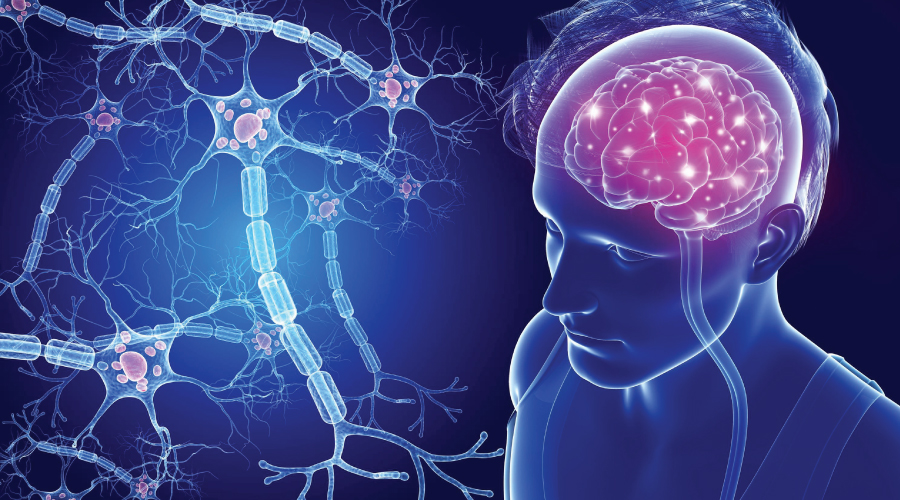Multiple Sclerosis is a disease of the central nervous system (CNS), which causes demyelination of the nerves. Sclerosis is a Greek word meaning scars. In MS, these scars can develop anywhere along the CNS and cause different symptoms depending on where they are. Multiple Sclerosis is thought to be an autoimmune disease, where the body attacks the protective sheath (myelin) around the nerve cells, thinking that they are foreign cells. With a damaged protective covering, the nerves in the brain and spinal cord have trouble communicating with each other.
This can lead to symptoms such as:
– Numbness/tingling
– Weakness
– Paralysis
– Loss of vision in one or both eyes/Double vision
– Impaired bladder and bowel control
– Chronic pain
– Imbalance
– Lack of coordination
– Slurred speech
– Profound fatigue
Statistics:
– Over 23,000 people are affected by MS in Australia.
– Most people are diagnosed between the ages of 20-40.
– Women are diagnosed 3 times more than men.
– No cure is known.
– There are ways to manage symptoms and slow the progression of MS.

3 different types of MS:
– Relapsing-Remitting MS (RRMS) is characterised by attacks and partial or total recovery. This is the most common form of MS.
– Secondary Progressive MS (SPMS) is a RRMS course that is characterised by increasing periods of attacks and only partial recovery. Half of those with RRMS will develop SPMS within 10 years, and within 25 years 90% of those with RRMS will have converted to SPMS.
– Primary Progressive MS (PPMS) is a course of MS that is progressive from the onset and symptoms do not remit. Only 15% of people diagnosed with MS have PPMS.
There are a variety of treatments for specific symptoms that arise from MS, which should be discussed with your doctor. These include:
– Muscle problems: a combination of medication may ease muscle problems, including stiffness and tremors. Physiotherapy, by a Physiotherapist with an understanding of MS precautions, is recommended for tailored rehabilitation and general conditioning.
– Fatigue: some studies have found that medication used to treat the sleep disorder narcolepsy is helpful in controlling MS-related fatigue.
– Neurological symptoms: visual disturbances can be helped with medication, including steroids.
– Continence issues: problems with incontinence may be treated with special exercises (including Pilates and those prescribed by a Physiotherapist), medications, continence aids (such as disposable pads) and certain dietary changes.
– Neuropsychological problems: treatment for depression or anxiety may include counselling or medication; memory problems and other cognitive difficulties can be better managed with professional help from a neuropsychologist.

To Exercise or not to Exercise?
Historically, MS patients have been advised not to exercise, due to fatigue and the potential for overheating. These symptoms may be due to inflammation at the damaged myelin, which weakens the nerve signals. Today, health professionals realise that performing proper heat-minimising exercise can improve, retrain, and strengthen muscles and nerves.
After an attack, or throughout the progression of Multiple Sclerosis, weakness may occur in the core muscle group, upper limbs, or lower limbs. This can disrupt the body’s ability to balance and even make it difficult to walk. If left untreated, weakness in the arms and legs can lead to shortening of the muscles, due to non-use. The coordination of movements may be compromised if certain muscles are not used properly for long periods of time. The risk of falling can increase due to weakness and reduced coordination.
Exercise is important as it can help address the problems of weakness, reduced coordination, reduced balance, and fatigue. One way exercise can help improve function is to stimulate neuroplasticity. Neuroplasticity occurs when one neurological tract takes over from another one that has been damaged. This promotes functional recovery. The only way this can be encouraged is through exercising the right way.
Due to the existence of various types of MS, with different symptoms, exercise programs such as Private Clinical Pilates are ideal as they are developed by a trained Physiotherapist, with the specific requirements of the individual in mind.

Why is Pilates good exercise for people with Multiple Sclerosis?
Clinical Pilates-trained Physiotherapists are trained to assess posture and movement. They can detect compensatory patterns that have formed due to weakness, loss of coordination, or changes in sensation. The Physiotherapist can then use modern Physiotherapy techniques to work on the specific impairments identified during the assessment of the patient and use targeted Pilates exercises to further address the impairments.
Pilates apparatus allows the Physiotherapist to develop Pilates exercises that can assist the patient in moving certain body parts in ways may not have been possible with the assistance of the apparatus. The amount of resistance or assistance provided by the apparatus during the Pilates exercise can be adjusted in small increments, which can minimise the chance of fatigue.
Pilates will also assist the person with Multiple Sclerosis to reconnect with their bodies using breathing, posture correction, and mindfulness during movements. Because each person affected by MS may experience a combination of symptoms that are fairly unique, accurate assessment and a customised exercise program are essential to ensure that the best results are achieved in minimising Multiple Sclerosis symptoms as much as possible.
The Body Refinery has trained Physiotherapists who can perform a full neurological examination to determine your goals for Clinical Pilates, in order to assist in your rehabilitation and maintenance of your mobility.
—
Book at The Body Refinery New Farm studio by contacting our friendly staff on 07 3358 3915 or at info@thebodyrefinery.com.au.
Follow us on Facebook, Instagram and Twitter for a daily dose of Pilates and Wellbeing.


